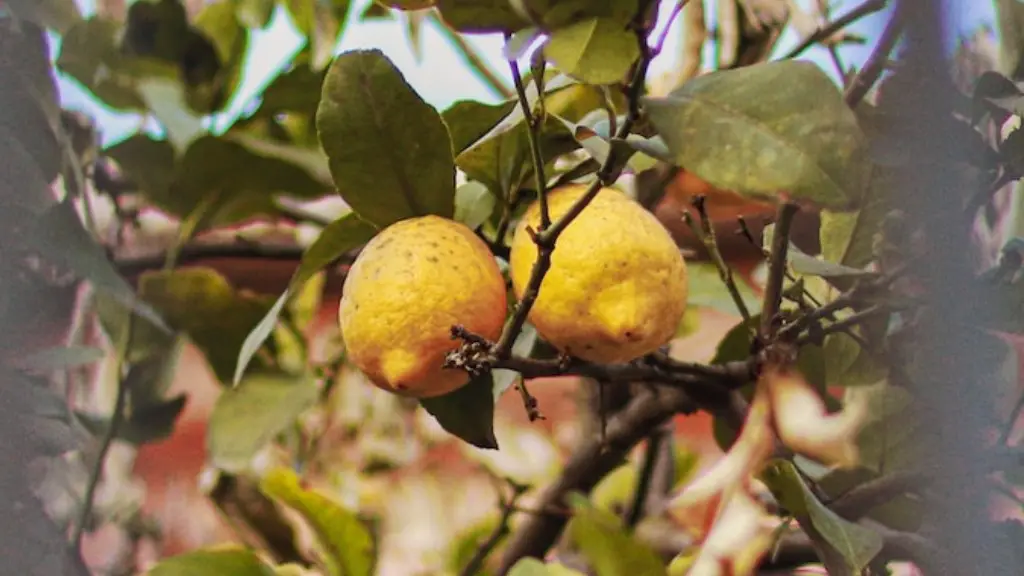Lemon trees can be transplanted, with a little know-how. Transplanting lemon trees involves carefully digging up the tree and its roots, and then replanting it quickly in a new location. If done properly, there’s a good chance the tree will survive the process without too much damage, and continue to thrive in its new location. There are certain considerations to bear in mind when transplanting lemon trees, such as the size of the roots, the amount of moisture in the soil, and the pH levels. Doing the job properly requires a little bit of planning, but transplanting lemon trees is certainly not impossible.
The most important part of transplanting lemon trees is correctly digging up the tree. This requires some digging and soil removal, to make sure the roots can easily be extracted. Care needs to be taken to try and keep the root system intact, since this is crucial for the success of the process. Depending on the size of the tree and root, this can be quite a job, and even experienced gardeners should employ help if necessary.
Once the tree is dug up, it should then be transported to its new location as quickly as possible. Transplant shock can have an adverse effect on the tree, so time is of the essence in making sure it gets re-planted as quickly as possible. If the tree is in a pot, it can be moved in the pot, but should then be taken out, allowing all the existing soil to be removed before re-planting.
It’s important to pay close attention to soil type and pH levels when transplanting lemon trees. The new soil should be well-draining, as lemon trees can easily suffer from root rot in too much moisture. If the soil is too acidic, it will have a detrimental effect on the health of the tree, so it’s important to check the pH levels when deciding on a location.
Transplanting lemon trees isn’t always a guaranteed success, but with a bit of knowledge and careful attention, it should be relatively straightforward. Knowing what to look for when it comes to soil type and root size, and making sure transplant shock is kept to a minimum, will help ensure the success of the process.
Transplant Procedures
Careful procedures need to be taken when transplanting lemon trees, beginning with the process of digging up the tree, roots and all. Depending on the size of the tree, this can be fairly complex, with help needed to gently and carefully remove the tree and its root system. Once the tree is out of the ground, it needs to be quickly taken to its new location, and then replanted as soon as is practical.
It’s especially important to make sure soil type and pH levels match the new environment. If the soil is too moist, it’s likely the tree will suffer from root rot. Additionally, if the soil is too acidic, it can cause significant problems for the lemon tree. Checking soil type and pH levels is essential to ensure that the tree can successfully transition to its new environment.
Finally, it’s important to ensure that the lemon tree has space and the right kind of light. Quick-growing trees like lemon trees require plenty of room to enlarge their root system and grow’s to their full potential. As citrus trees naturally like to grow in full sun, making sure the new location is relatively inaccessible to the sun is important.
Transplant Plant Preparation
Proper preparation is also necessary when transplanting lemon trees. To begin, the lemon tree should be thoroughly watered a few days before transplanting. This will hydrate the tree and reduce the possibility of transplant shock once the root ball is dug up and placed in the new location.
Once the tree has been carefully dug up, the process of wrapping it should be accomplished. This can be done by wrapping the root ball in Hessian cloth or burlap, being careful to make sure any branches or twigs aren’t choked in the process. This will help keep the tree’s foliage and roots moist, thus preventing the tree from wilting while travelling to the new location.
If the tree is in a pot, it needs to be taken out carefully and all of the old soil needs to be removed, allowing the tree to be planted straight in the new soil. This will help with both the relocation process and help make sure the lemon tree has the best chance to start its life in its new environment.
Replanting the Tree
This is the most important part of the process, and the success or failure of the transplant depends on the quality of the replanting process. Lemon trees should be planted at the same soil level as the original spot, and the soil should be prepared prior to planting.
Once planted, mulch should be added, in order to help reduce water evaporation and keep the soil moist and healthy. Additionally, fertilizer should be added to the soil at this time, as this will provide vital nutrients as the tree becomes established in its new environment.
Once planted, the lemon tree will need to be monitored closely to make sure it responds well to its new environment. This may involve more watering or shading, and giving the tree further pruning and training, if necessary.
Environmental Factors
When selecting a new spot for transplanting the lemon tree, environmental factors need to be taken into consideration. As citrus trees naturally like to grow in full sun, the area where the tree is replanted needs to be relatively free of shade. Additionally, the replanting site needs to be sheltered from strong winds, as this too can hinder the tree’s health.
The ground should also be relatively undisturbed, as this will provide the best chance for the tree to take hold in its new home. Proper watering and care should then be applied throughout the lemon tree’s growing season, in order to ensure the best chance for success.
Summary
Transplanting lemon trees requires a bit of planning and know-how, but can be accomplished with relative ease. The key is to dig up the tree carefully and replant it quickly in its new location. This is best done when the soil and pH levels closely match the original location, and all care is taken to reduce transplant shock.
It’s important to prepare the lemon tree correctly, prior to transplanting, as well as prepare the new location for the tree. This includes checking the soil type, pH levels, and ensuring the tree has plenty of space and is exposed to plenty of direct sunlight.
Once replanted, the lemon tree needs to be closely monitored for any signs of transplant shock. This may involve extra watering or pruning, in order to ensure the tree has the best chance of survival. With the right steps taken, transplanting lemon trees can be an easy, efficient process.



